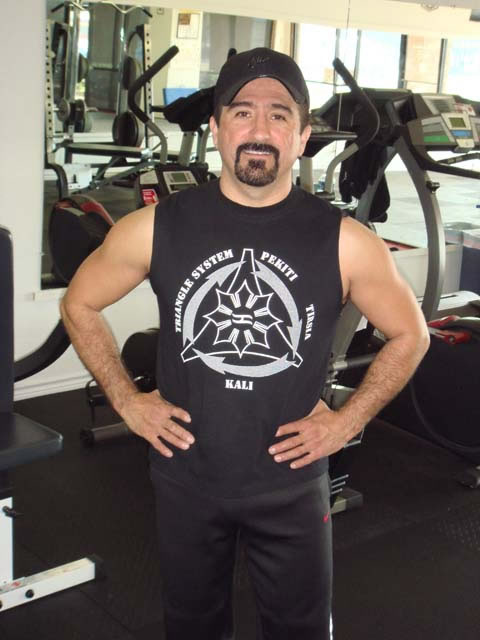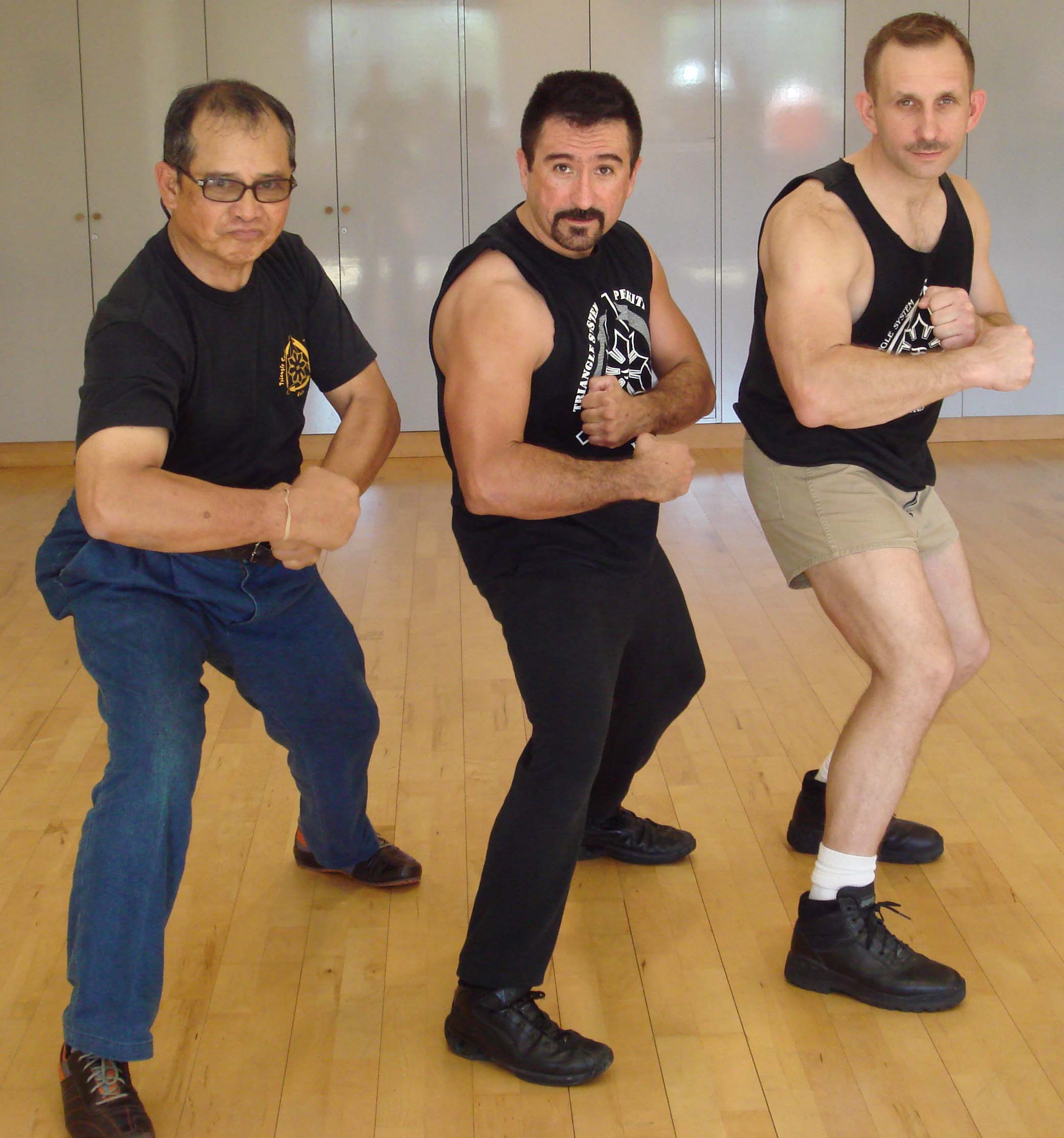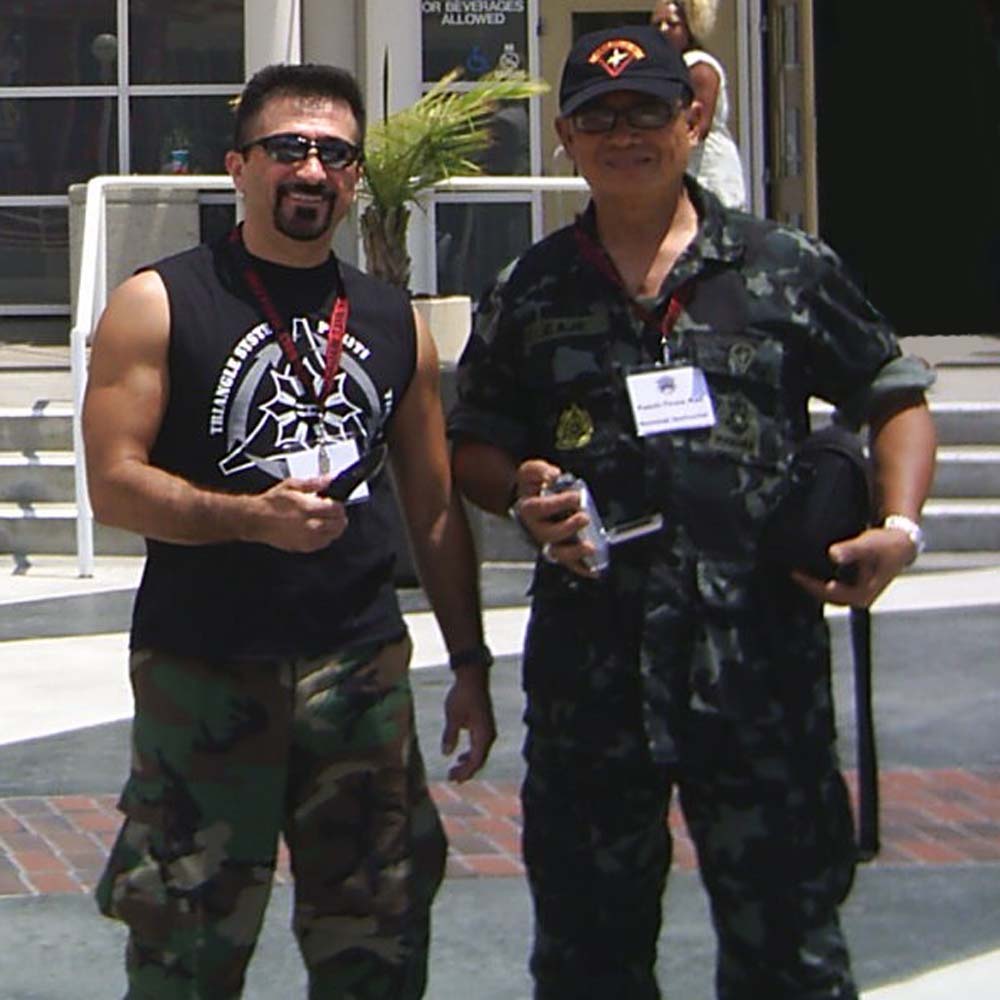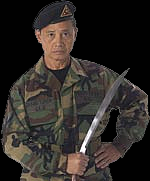Filipino Fighting Arts
The Fighting arts of the Philippines are deeply rooted in the history and culture of the Filipino people. They are the products of a highly developed civilization which flourished long before the arrival of the West upon its shores, and of centuries of warfare against a variety of oppressors. Both these factors are responsible for the highly technical and pragmatic outlook of the Filipino martial arts.
The Maharlikas was the original name of the Philippines before the coming of the Portuguese and Spanish in the 15th and 16th centuries. The general consensus among scholars is that the first settlers in the Philippines were the Negritos of prehistory. It is theorized that these small dark-skinned people traveled by land from Central Asia, perhaps via an ancient land bridge. They brought with them the short bow and later developed the long bow.
This process was followed by a series of Malay migrations from what is today Southeast Asia and the Indonesian Archipelago. The first of these began before the birth of Christ. These taller seafaring people brought with them the first bladed weapons.
In the 5th and 6th centuries in Indonesia and Malaysia a huge empire was formed due to the migration of the Hindu tribes of India to Sumatra and Java. The Srividjayan Empire, as it came to be known, eventually spread as far as the Philippines. Their martial arts skills, advanced weaponry, and superior organization made it possible for them to conquer the earlier settlers. Some fled to distant islands, others stayed and the two cultures merged. The Srividjayans were the ancestors of the Tagalogs, Ilocanos, Pampangos, Visayans, and Bicolanos. The area of the Central Philippines where these people first landed is today known as the Visayan region. It is thought by many Filipinos that the island of Panay, the most western part of the Visayan Islands, was the birthplace of Kali – as the Filipino martial arts were known at that time. The Srividjayans brought the influence of Hindu and Indonesian religion, philosophy, arts, and combative forms to the Philippines. They introduced laws (the famous Code of Kalantaw), a calendar, written alphabet (Sanskrit), new religion, and a system of weights and measures. This new culture developed a social unit called the barangay each independently headed by a Datu (leader or chief). These were the first to leave a written historical record.
The next major incursion of foreign ideas and culture occurred in the 12th and 13th centuries. The Majapahit Empire of Indonesia, which eclipsed the Srividjayan Empire spread throughout Southeast Asia and into the Philippines. At its height the Empire included areas that are today Burma, Indonesia, Thailand, Malaysia, Cambodia, the Philippines and Madagascar. Deeply influenced by Moslem culture, the Majapahit brought Islam to the Philippines where it settled most heavily in the South. Today the Southern region of Mindanao remains a Moslem stronghold, fiercely independent and at war with the governing Christian majority. By the 12th century thousands Chinese had migrated to the Philippines following the Manchurian invasion of China. They brought with them the martial arts of the Tang Dynasty, which came to be known as Kuntao throughout Southeast Asia. The Chinese and their arts were assimilated into the Island culture.
These diverse influences led to a highly developed civilization, which existed before the 6th century until incursions from the West starting in the 16th century. The Filipino’s during this period were thought to be followers of the God of Violence – Kali. The head of the family unit was called the Kaliman. Each Kaliman had a rank of status represented in his blade known as the Kalis. There are at least 25 different types of blades in the Philippines, although most estimates put the figure much higher. Many of these bear signs of Hindu, Indonesian, and Moslem influence. Blade designs differed from region to region and sometimes from village to village. The type and size of the blade was a measure of the respect to be accorded the individual Kaliman as well as an indicator of his place of origin. The more well known types of blade are the kampilan, the kris, the lahot, utak, gunong, barong, and balasiong. The leader of the barangay or of the region was said have worn the shortest Kalis – the short length being a symbol of his authority and fighting prowess. This blade is known even today as the danganan.
Based upon his fighting prowess and other skills the Kaliman was awarded a title of rank. In the Visayan region the Datu headed the barangay and above him was the Sultan who had authority over the entire region. At one point it is thought that there were three Sultanates – North in Luzon region; Central in the Visayas; South in Mindanao. It was, however the Tuhon or master teacher who was often considered the most important person in a particular region. The Tuhon represented the repository of knowledge and culture of a given area. The bothoan or central communal school was headed by the Tuhon. It was his responsibility to pass on the culture of the Filipino civilization. These teachings grouped under the name Kali, included philosophy, religion, morality, healing, combative arts and the written word. Long before Spanish rule, the Filipino’s had developed their own system of medicine, astronomy, engineering, as well as written language and history. Most of these writings were destroyed during the Spanish conquest. Written and oral languages differed according to region so that today there are over 300 major dialects in addition to Tagalog, the national language.
The history, philosophy, and religious aspects of kali, as an object of worship and kali, the fighting arts were so closely interwoven that they must be considered as a single entity. Although Kali was the God of Violence and death, the Filipinos considered it a peaceful god. The Kaliman, spiritually through his philosophy and physically through his training in the combative arts of Kali confronted death as a part of daily life. By this constant awareness of the presence of death and his resolution to confront it, the Kaliman is liberated from the weight of his fear of death. In this confrontation with the darker side of life the Kaliman comes to see things as they really are, a view uncluttered by futile dreams, hopes and false expectations. Further he learned not to base his actions on the fear of death, old age or sickness but to revel in the moment. Only in the “now” can he see things clearly and without judgment or bias.
Leo T. Gaje, a modern day Tuhon, postulates that this view of the world engendered mutual respect among men and a respect for life itself. Therefore the god of violence was also one of respect and peace. Indeed, the ancient laws of Kali, known as the code of Kalantiaw, contained 18 laws – the first was “Thou shall not kill”. In all its phases – philosophy, healing, the sciences, combat, the written word, etc. – Kali was an art for the preservation of life. The life of the individual, his family, village, and culture. The importance of Kali is emphasized in the words basic to the Filipino and his view of the world. Kaligayahan or happiness and Kalayon (freedom) both contain the spirit of the Kali within them. They are words still used today in parts of the Philippines.
The concept of Kali as an art which preserves life and freedom and which cultivates mutual respect among men can be most vividly seen in the unconquerable spirit of Muslims (Moros) of the Southern Philippines. Dan Inosanto relates that the Muslims warriors opposed the Spanish conquests with their religion, their courage, and their unparalleled fighting ability. Attempt by the Spanish to capture Muslim leaders as a lever to make their people submit, as they had done with Montezuma in Mexico, ended in failure. The Filipino leader held his position by dint of his fighting knowledge his fighting prowess. He was expected to die for his people in order to preserve their freedom. The Southern Philippines remained exempt from tribute throughout the Spanish occupation. With American intervention and occupation at turn of the century the Moros continued their resistance to foreign government and religion even when the rest of the country submitted. The .45 caliber automatic was issued to American servicemen because their .38s did not have sufficient stopping power to halt the charge of these ferocious warriors. This battle continues even today between the Moros of Mindanao and the incumbent government.
Knowledge of the Filipino martial arts first appeared in the 16th century with arrival in the Philippines of the Portuguese explore Ferdinand Magellan. Magellan attempted to subdue the natives and convert them to Christianity but he was resisted by Lapulapu a leader of the local people.Lapulapu’s men were well trained in native fighting arts due to preparations for the battle over a territorial dispute between Lapulapu and Humabon, the chief of the neighboring tribe. The tribes of Lapulapu and Humabon were part of the Sri Visayan Empire in the earlier centuries of Filipino history. The fighting arts of both Lapulapu and Humabon were originally brought to the Visayan Islands by their ancestors.
The early styles of Kali advocated by lapulapu and Humabon were also known as pangamut. They consisted of only eight strokes – six slashes, two each to the head, chest, and kidney area, and two thrusts – one to the head and one to the chest. According to Eulogio Canete of the Doce Pares Club, the differences were more in application than in theory. Lapulapu was reputed to be extraordinarily powerful. His favorite weapon was a huge kampilan (double – pointed blade). It is said that he could throw a short stick with such force as to stick it fast in a coconut tree. The kali of Humabon was softer and more evasive than Lapulapus’ hard, powerful techniques. Despite the preparation of the two chiefs, a battle never took place between their tribes. Instead on April 27, 1521 the Portuguese were defeated in the battle of Mactan. Lapulapu and his men met swords and musket fire with blades, spears, and sharpened sticks. Magellan himself died in the battle.
The Filipino martial arts under went a radical change during the 18th and 19th centuries. The Spanish conquistador’s had learned to respect Filipino weaponry and fighting skills in the intervening years. Under their rule the display or carrying of blades and practice of Kali were prohibited. The Filipinos turned to the use of the bahi (hardwood) or oway (rattan) stick. Practice with the blade still continued in secret or in moro-moro plays. These indigenous stage plays had Christians engaged in sham battles with Moros. Kali, in a modified form, and Filipino dances became an important part of the show. It was through the moro-moro plays that arnis survived the Spanish conquest and later the American occupation.
With Spanish rule the native fighting arts adopted new terminology and new methods. Previously the art had been one in which the blade was the primary weapon. Under the Spanish the emphasis of the art turned to the use of the stick. Before the Spanish Kali was known as pananandata to the Tagalogs, Kalirongan to the Pangasinenses, among the Ilocanos as didya or kabaraon, to Visayans as kaliradman or pagaradman. The Pampaguenos called it sinawali and the Ibanag pagkalikali. After Spanish occupation the art had became known as arnis de mano derived from the Spanish word “arnes” meaning trappings or defensive armor. In the Tagalog province it became estocada, and in other areas estogue, fraile, armas de mano, or simply arnis. Among the Visayans it changed to egrima, escrima, or eskrima from the Spanish fro “to fence” or “skirmish”. The stick became known as the baston, garote or tabak and the blades are often grouped under the term bolo. Espada y daga was what Spanish called the blade and dagger, and sinawali or double baston refer to the use of two sticks. Today the native fighting arts of the Philippines are grouped under the name arnis. The National Arnis Association of the Philippines (Naraphil), a government supported organization, is attempting to unify all of the native fighting arts of the Philippines under one body, although many styles are lost or remain secret handed down only within the family or from father to son.
Take a look around
Photo Gallery
Video Gallery
Empty Hands
Certifications
Personal Trainer
Aerobic Group Fitness
Zumba Latin Dance Aerobics
Filipino Fighting Arts
Chinese Kenpo
Zumba Gold
Injury Prevention and Excercise Progressions
Midlife Fitness for Women







